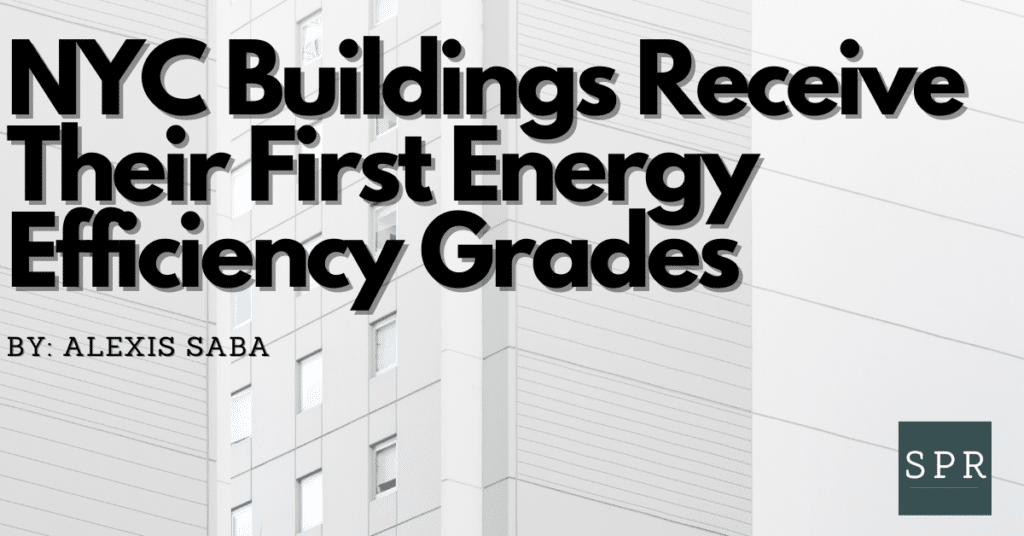Blog

NYC Buildings Receive Their First Energy Efficiency Grades
On October 1, 2020, buildings over 25,000 square feet in New York City received their first energy efficiency grades from the City Department of Buildings (“DOB”). Buildings must post the grade “in a conspicuous location near each public entrance to such building” by October 30, 2020. Failure to do so will result in a fine of $1,250.
Local Law 33 of 2018, as amended by Local Law 95 of 2019, sets the grades as follows based on a building’s ENERGY STAR Portfolio Manager score, which is generated after buildings submit energy use and property information as required by NYC’s benchmarking laws:
- A building with a score equal to or greater than 85 will receive an energy efficiency grade of A;
- A score equal to or greater than 70 but less than 85 will result in a grade of B;
- A score equal to or greater than 55 but less than 70 will result in a grade of C; and
- A score less than 55 will result in a grade of D.
Where a building owner does not submit a score to DOB and has an opportunity to be heard with respect to such non-compliance, the building will receive an energy efficiency grade of F. Where it is not feasible for a building to obtain an energy efficiency score or if the building is exempt (i.e., it contains a data center, television studio, and/or trading floor that together exceed ten percent of the gross square footage of any such building), the building will receive a grade of N.
DOB will issue new grades annually based on the prior year’s benchmarking data, which must be submitted through Portfolio Manager by May 1. Because this year’s grades are based on 2019 benchmarking data, the grades do not reflect any changes in building occupancy and energy use related to COVID-19. It is advisable to work with an engineer to ensure that the benchmarking data are accurate, including building floor area and property type. DOB compliance guidance is available here and here.
Businesses throughout the real estate community are increasingly setting aggressive sustainability goals, and the building energy efficiency grades provide an easy metric for tenants and lenders to use as they decide where to locate and invest. However, the building grades do not necessarily align with the greenhouse gas emissions reporting required under Local Law 97 of 2019, a law that was passed along with the building grade law as part of the 2019 Climate Mobilization Act. Local Law 97 requires many buildings in the City over 25,000 square feet to meet greenhouse gas emissions caps starting in 2024 and to annually report compliance to DOB. While the building grades are based on energy efficiency, Local Law 97 compliance is based on greenhouse gas emissions. Therefore, even energy efficient buildings (with a good building grade) may still exceed the Local Law 97 greenhouse gas emissions caps where they use a lot of energy, especially energy with high attributed carbon emissions. Furthermore, unlike the building grade law, which does not penalize building owners for a low grade, Local Law 97 imposes a penalty of $268 per metric ton of carbon dioxide that a building emits over its allotted cap, potentially resulting in annual fines of hundreds of thousands or millions of dollars. Therefore, even if building owners or other real estate stakeholders disregard the energy efficiency grades, it is critical that they address building energy use as part of Local Law 97 compliance.